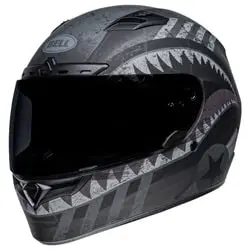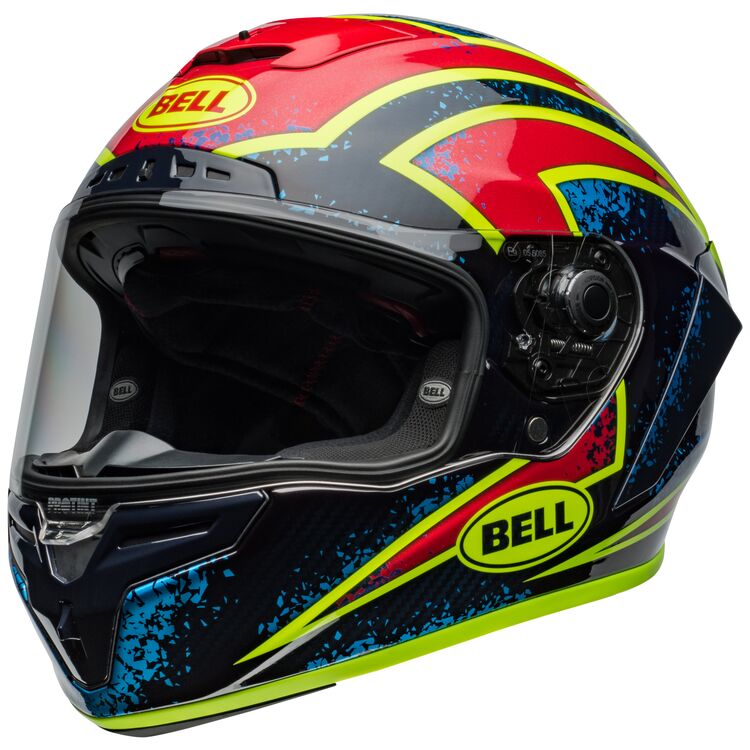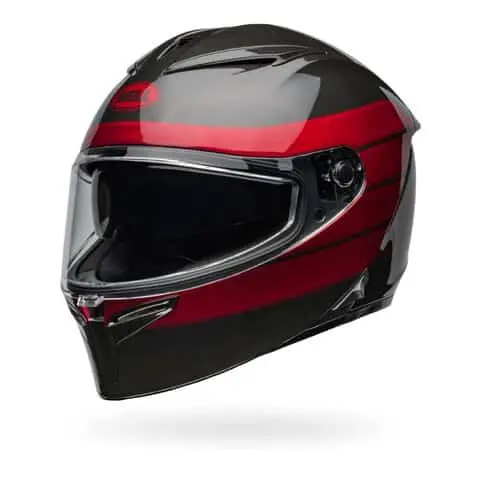Bell full face helmets represent the gold standard in head protection for motorcycle and mountain bike riders.
These helmets blend modern engineering with classic aesthetics, offering riders reliable protection whether tackling city streets, winding roads, or rugged trails.
I’ve spent time with many Bell lids, and they consistently deliver on the promise of all-day comfort and peace of mind. Are you ready to find out which is the best Bell full face helmet that fits your riding style and safety needs?
Here is a comprehensive comparison table for all the Best Bell full face helmets, covering the key features you requested: Sizing, Interior, Visor, Safety Certification, Bluetooth, Weight, Noise Levels, Price.
Which Is The Best Bell Full Face Helmet?
To determine which helmet is “best” among the Bell Race Star Flex DLX, Bell Qualifier DLX, Bell Eliminator, Bell Lithium, and Bell Bullitt GT, you need to consider the specific needs and priorities of the rider. Each helmet excels in different areas, and no single model is universally superior for every user.
| Feature | Model |
|---|---|
| Best for racing and maximum safety | Bell Race Star Flex DLX |
| Best value for money | Bell Qualifier DLX or |
| Bell Lithium (depending on preferred features) | |
| Best for retro style | Bell Bullitt GT or |
| Bell Eliminator |
If you want the “best” overall in terms of technology, safety, and comfort, the Bell Race Star Flex DLX is the top choice.
However, the best helmet for you depends on your riding style, budget, and personal preferences.
If your top priority is advanced safety, premium build quality, and racing performance, the Bell Race Star Flex DLX stands out as the best.
It features a 3K carbon fiber shell, advanced impact absorption technology, a photochromic visor, and a removable, washable liner with magnetic cheek pads for quick removal in emergencies.
Experts consistently praise its comfort, excellent ventilation, and aerodynamic design, making it ideal for track days, high-speed riding, and riders who demand the highest level of protection.
Best Budget Bell Full Face Helmet
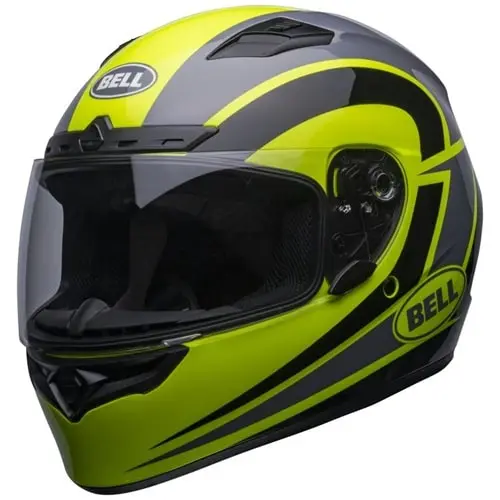
For budget-conscious riders seeking value and modern features, the Bell Qualifier DLX and Bell Lithium are top contenders.
The Qualifier DLX offers MIPS protection and a Transitions visor at a mid-range price, with good ventilation and comfort for everyday use.
The Bell Lithium (especially the MIPS version) is praised for its lightweight feel, excellent drop-down sunshield, and solid safety credentials, making it a great choice for commuters and touring riders.
Best Retro Bell Full Face Helmet
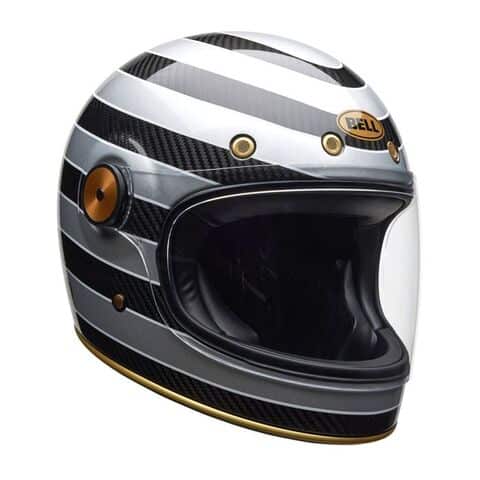
If retro style and comfort are your main concerns, the Bell Bullitt GT and Bell Eliminator are strong options.
The Bullitt GT delivers a premium leather interior and classic looks, while the Eliminator is lightweight and offers a wide field of view, with safety features that rival more expensive helmets.
In summary:
- Best for racing and maximum safety: Bell Race Star Flex DLX
- Best value for money: Bell Qualifier DLX or Bell Lithium (depending on preferred features)
- Best for retro style: Bell Bullitt GT or Bell Eliminator
If you want the “best” overall in terms of technology, safety, and comfort, the Bell Race Star Flex DLX is the top choice.
However, the best helmet for you depends on your riding style, budget, and personal preferences.
Bell Full Face Helmet Sizing
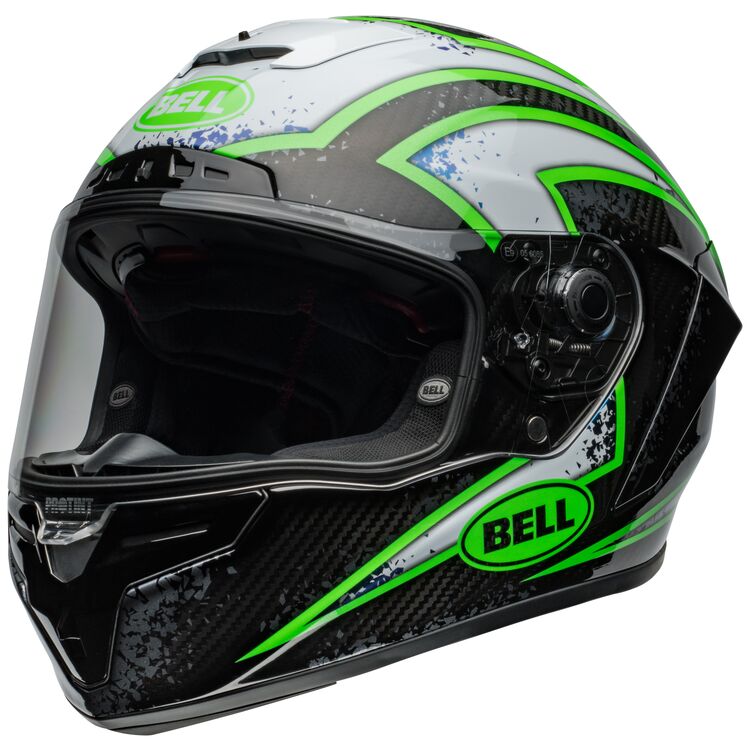
Bell Race Star Flex DLX Sizing is engineered for a near-custom fit with five shell sizes and six impact liner sizes.
This approach lets me dial in comfort and safety for my head shape, something I appreciate after struggling with generic fits in the past.
The medium oval profile suits most riders, but I notice some forum users mention it runs a bit snug, so I’d recommend checking your size before buying.
Bell Qualifier DLX comes in a wide range of sizes, fitting most head shapes with an intermediate oval.
I find the sizing chart accurate, but like the Race Star, a few riders suggest sizing up if you’re between sizes. The fit is comfortable for daily use, and the liner breaks in nicely after a few rides.
Bell Eliminator offers XS to 3XL with three shell sizes for a compact fit. I like how it fits most intermediate oval heads, but some users report it runs small, so I’d size up if I’m on the borderline.
The Eliminator feels snug at first but loosens up with wear, making it a solid choice for both short and long rides.
Bell Lithium is available in three shell sizes across S to 2XL (non-MIPS), or XS to 3XL (MIPS version), which means most riders find a good fit.
I notice the sizing is consistent, but a few forum users mention it feels tight, especially around the cheeks. The liner softens over time, and the fit becomes more comfortable.
Bell Bullitt GT uses three shell sizes for a tailored fit, with optional cheek pad thicknesses. I like the flexibility, but I find I need to try it on—some riders report needing to size up, while others say it fits true to size. The fit is comfortable for glasses wearers, and the cheek pads are easy to swap for a custom feel.
Bell Full Face Helmet Sizing Comparison
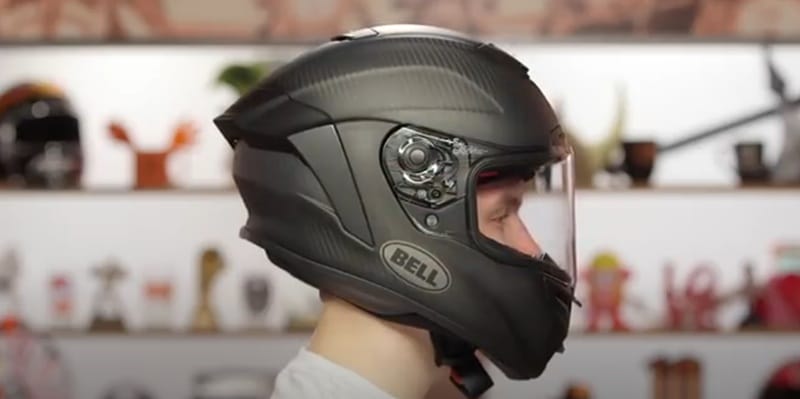
Here is a Sizing Comparison Table for the Bell helmets, summarizing available sizes and fit notes based on official size charts and retailer data:
| Helmet Model | Available Sizes (Head Circumference in cm/inches) | Shell Sizes | Fit/Shape Notes |
|---|---|---|---|
| Bell Bullitt GT | XS (54–55 cm / 21.3–21.7 in), SM (55–56 / 21.7–22), MD (57–58 / 22.4–22.8), LG (58–59 / 22.8–23.2), XL (60–61 / 23.6–24), 2XL (62–63 / 24.4–24.8) | 3 | Intermediate oval, snug fit, updated head form, easy cheek pad swap |
| Bell Race Star Flex DLX | XS (53–54 / 20.9–21.3), SM (55–56 / 21.7–22), MD (57–58 / 22.4–22.8), LG (59–60 / 23.2–23.6), XL (61–62 / 24–24.4), 2XL (63–64 / 24.8–25.2) | 5 | Medium oval, customizable liner, runs snug, premium fit |
| Bell Qualifier DLX | XS (53–54 / 20.9–21.3), S (55–56 / 21.7–22), M (57–58 / 22.4–22.8), L (59–60 / 23.2–23.6), XL (61–62 / 24–24.4), XXL (63–64 / 24.8–25.2), XXXL (65–66 / 25.6–26) | Multiple | Intermediate oval, wide range, fits most head shapes, accurate chart |
| Bell Eliminator | XS (53–54 / 20.9–21.3), S (55–56 / 21.7–22), M (57–58 / 22.4–22.8), M/L (58–59 / 22.8–23.2), L (59–60 / 23.2–23.6), XL (61–62 / 24–24.4), XXL (63–64 / 24.8–25.2), XXXL (65–66 / 25.6–26) | 3 | Intermediate oval, runs small, compact fit, easy cheek pad swap |
| Bell Lithium | XS (53–54 / 20.9–21.3), SM (55–56 / 21.7–22), MD (57–58 / 22.4–22.8), LG (59–60 / 23.2–23.6), XL (61–62 / 24–24.4), 2XL (63–64 / 24.8–25.2), 3XL (64–66 / 25.2–26) | 3 | Intermediate oval, soft liner, fits true to size, some cheek tightness |
Key:
- Shell Sizes: Indicates the number of outer shell sizes (not total size options), which affects fit and weight distribution.
- Fit/Shape Notes: Summarizes the main fit characteristics and any notable user feedback.
This table gives you a clear, at-a-glance comparison of sizing options and fits for each Bell helmet.
Bell Full Face Helmet Interior

Bell Race Star Flex DLX features a premium Ionic+ comfort liner that wicks sweat and resists odors.
The magnetic cheek pads make it easy to remove and wash the liner, and the padding feels plush from the first ride. I notice the liner stays fresh even on long trips, and the cheek pads break in quickly, molding to my face.
Bell Qualifier DLX uses a removable, washable liner with antimicrobial treatment. The padding is comfortable, but I find it less luxurious than the Race Star.
The cheek pads are soft and break in well, and the liner manages sweat effectively for a helmet in this price range.
Bell Eliminator has a removable, antibacterial liner with contoured cheek pads. I appreciate the comfort and easy cleaning, but the padding feels a bit thinner than in premium models.
The liner remains fresh for daily riding, and the cheek pads are replaceable for a custom fit.
Bell Lithium offers a removable, washable synthetic leather liner that’s comfortable for all-day use. The liner is antimicrobial and easy to clean, and the padding breaks in quickly.
I notice the liner keeps my head cool and dry, even on hot days.
Bell Bullitt GT comes with a premium leather interior that feels luxurious and is easy to maintain. The liner is removable and washable, and the cheek pads are available in different thicknesses.
I like the comfort and the way the liner molds to my head, but the leather can get warm in summer.
Bell Full Face Helmet Interior Comparison
Here is an Interior Comparison Table for the Bell helmets, detailing interior materials, comfort features, and maintenance based on empirical data and manufacturer specifications:
| Helmet Model | Interior Material / Features | Notable Details |
|---|---|---|
| Bell Bullitt GT | Genuine leather, removable/washable, anti-bacterial liner | Premium feel, contoured cheek pads, optional sizing, easy maintenance, tool-less removal |
| Bell Race Star Flex DLX | CoolJade™ antibacterial, removable/washable, magnetic cheek pads with Magnefusion™ system | Triple-density cheek pads, magnetic removal, MERS emergency extraction, plush comfort |
| Bell Qualifier DLX | Moisture-wicking, removable/washable, contoured cheek pads | Antimicrobial, quick-dry, soft liner, easy to clean, contoured for comfort |
| Bell Eliminator | Anti-bacterial, removable/washable, contoured cheek pads | Comfortable, easy to clean, replaceable cheek pads, fits glasses/sunglasses |
| Bell Lithium | Synthetic leather, removable/washable, anti-bacterial | Lightweight, easy to maintain, fresh feel, good for long rides |
This table highlights the key interior features that affect comfort, hygiene, and user experience for each helmet.
Bell Full Face Helmet Visor

Bell Race Star Flex DLX includes a ProTint photochromic shield that adapts to changing light conditions.
I find the visor clear in low light and dark in sunlight, with smooth transitions. The shield is easy to remove and replace, and the visibility is excellent for both commuting and track days.
Bell Qualifier DLX features a Transitions visor that adjusts to light. I like the convenience, but the visor is prone to scratching.
The shield is easy to operate, and the visibility is good, but I notice some users prefer a darker tint for bright days.
Bell Eliminator comes with a Class 1 optically correct visor and a ProVision anti-fog insert. I appreciate the wide field of view and the anti-fog protection, but the visor mechanism can be stiff at first. The shield is easy to replace, and the anti-fog insert works well.
Bell Lithium includes a ClickRelease V2 visor and a drop-down sunshield. I like the ease of removal and the sun visor coverage, but the visor aperture is a bit shallow. The visor locks securely and is easy to operate, and the Pinlock 70 insert helps prevent fogging.
Bell Bullitt GT uses a magnetic visor closure and a tool-less removal system. I find the visor easy to open and close, but it’s not Pinlock-ready. The visibility is excellent, but I notice some buffeting at speed. The visor is durable and easy to maintain.
Bell Full Face Helmet Visor Comparison
Here is a Visor Comparison Table for the Bell helmets, detailing the type of visor and its key features based on manufacturer and review evidence:
| Helmet Model | Visor Type / Features | Notable Details |
|---|---|---|
| Bell Race Star Flex DLX | Panovision ProTint Photochromic Shield | Automatically adjusts to light, Pinlock Max Vision anti-fog included, wide field of view |
| Bell Qualifier DLX | Transitions Adaptive (Photochromic) Shield, NutraFog II anti-fog coating | Reacts to light, not Pinlock-ready, NutraFog II coating for anti-fog, quick-change mechanism |
| Bell Eliminator | ProVision Anti-Fog Face Shield (Class 1 optics), Snap-in Clear & Smoke Covers | Class 1 optics, anti-fog, includes snap-in covers for vents, easy to clean |
| Bell Lithium | ClickRelease V2 Visor, Drop-down Sunshield, Pinlock 70 anti-fog included | Easy to remove, drop-down sunshield, Pinlock 70 for anti-fog, shallow side aperture |
| Bell Bullitt GT | Flat Visor (e.g., Iridium Dark Silver), Magnetic Closure, Tool-less Removal | Flat style, easy to install/replace, not Pinlock-ready, magnetic closure, stylish finishes |
This table highlights the main visor types and their standout features for each helmet, helping you quickly compare their functionality and convenience.
Bell Full Face Helmet Safety Certification
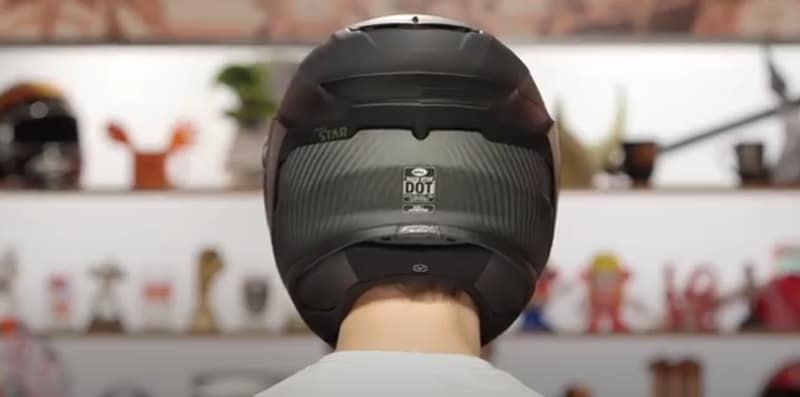
Bell Race Star Flex DLX is certified to DOT, ECE, and FIM standards. I trust the protection, especially for track use, and the advanced liner manages energy from low, mid, and high-speed impacts.
Bell Qualifier DLX meets DOT and ECE 22.05 standards, with some versions offering MIPS for added protection. I find the safety features solid for the price, and the helmet performs well in independent tests.
Bell Eliminator is certified to DOT and ECE 22.05 or 22.06, depending on the model. I like the SHARP 5 Star rating for the ECE version, which gives me confidence in its crash protection.
Bell Lithium meets DOT and ECE 22.06 standards, with the MIPS version adding rotational impact protection. I appreciate the modern safety features at this price point, and the helmet performs well in real-world scenarios.
Bell Bullitt GT is certified to DOT and ECE 22.06. I find the protection reassuring, especially for a retro helmet, and the updated standard means it’s ready for modern riding conditions.
Bell Full Face Helmet Safety Certification Comparison
Here is a Safety Certification table for the Bell helmets, detailing the official safety standards each model meets:
| Helmet Model | Safety Certifications | Notes/Details |
|---|---|---|
| Bell Bullitt GT | DOT, ECE 22.06 | Meets the latest European standard for advanced safety |
| Bell Race Star Flex DLX | DOT, ECE, Snell | Certified for both road and track use; Snell rating for motorsport excellence |
| Bell Qualifier DLX | DOT, ECE, (SHARP 3/5) | Legal in US, Europe, and elsewhere; SHARP tested (3/5 stars) |
| Bell Eliminator | DOT, ECE 22.05/22.06, (SHARP 5/5) | ECE version scored maximum SHARP 5 stars for safety |
| Bell Lithium | DOT, ECE 22.06 | Meets current European standard for safety |
Note:
- DOT = US Department of Transportation standard
- ECE = European standard; 22.06 is the latest, 22.05 is the previous
- Snell = Independent, rigorous motorsport standard
- SHARP = UK independent safety rating (stars indicate performance in crash tests)
Some helmets may be available in versions with different certifications, so always check the specific model and region.
Bell Full Face Helmet Bluetooth
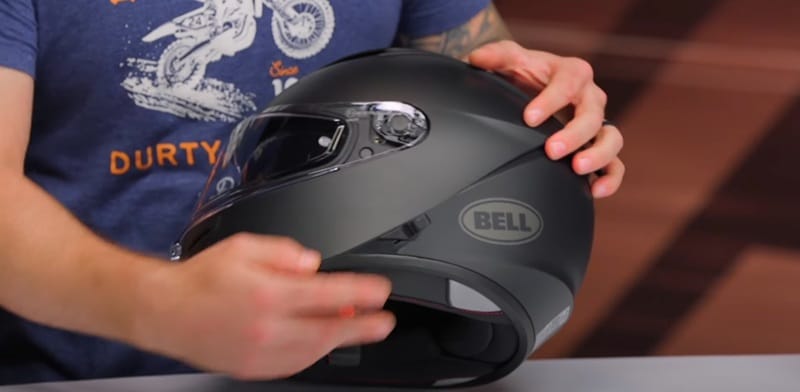
Bell Race Star Flex DLX is ready for Bluetooth intercom systems, with recessed speaker pockets. I find it easy to install a comms unit, but the pockets could be deeper for some headsets.
Bell Qualifier DLX has recessed speaker pockets for Bluetooth compatibility. I like the ease of installation, and the helmet works well with most intercom systems.
Bell Eliminator includes recessed speaker pockets for Bluetooth. I find the pockets accommodate most headsets, but the thick rubber rim can make clamp mounts tricky.
Bell Lithium is comms-ready with internal speaker pockets. I notice the sunshield lever can get in the way of some intercom units, but most riders find a way to fit their preferred system.
Bell Bullitt GT features integrated speaker pockets for Bluetooth. I like the seamless fit, and the helmet works well with a range of intercoms.
Bell Full Face Helmet Bluetooth Comparison
| Helmet Model | Bluetooth Compatibility | Notes/Details |
|---|---|---|
| Bell Bullitt GT | Yes | Integrated speaker pockets for easy Bluetooth intercom installation |
| Bell Race Star Flex DLX | Yes | Recessed speaker pockets; accommodates most Bluetooth systems |
| Bell Qualifier DLX | Yes | Recessed speaker pockets; compatible with most intercoms |
| Bell Eliminator | Yes | Recessed speaker pockets; may require extra effort for clamp mounts |
| Bell Lithium | Yes | Comms-ready with internal speaker pockets; sunshield may interfere |
Note:
None of these helmets include built-in Bluetooth, but all feature pockets for easy installation of aftermarket Bluetooth or intercom systems.
Compatibility with specific brands may vary, so check fitment guides if you have a particular system in mind.
Bell Full Face Helmet Weight

Bell Race Star Flex DLX weighs about 3.3 lbs (52.8 oz) in size M. I notice the carbon shell keeps it light and comfortable for long rides.
Bell Qualifier DLX weighs between 3.3 and 3.5 lbs (52.8–56 oz), depending on the size. I find it light enough for daily use, but not as feathery as premium models.
Bell Eliminator ranges from 2.7 to 3.3 lbs (43.2–52.8 oz), with the carbon version being the lightest. I appreciate the reduced neck strain on long rides.
Bell Lithium is about 3.0–3.8 lbs (48–60.8 oz), with the MIPS version at the heavier end. I find it light for a budget helmet, and the weight is well distributed.
Bell Bullitt GT weighs around 3.3 lbs (52.8 oz) in size M, with some sources listing up to 3.7 lbs (59.2 oz) for larger shells. I notice the weight is manageable, but not the lightest in its class.
Bell Full Face Helmet Weight Comparison
Here’s a weight table for the Bell helmets based on verified specifications and user reports. All weights are given in pounds and ounces for clarity.
| Helmet Model | Weight (lbs/oz) | Notes/Details |
|---|---|---|
| Bell Bullitt GT | 3.3 lbs (52.8 oz) | Varies by size; some larger shells up to 3.7 lbs |
| Bell Race Star Flex DLX | 3.3 lbs (52.8 oz) | Carbon fiber shell keeps weight low for a race helmet |
| Bell Qualifier DLX | 3.3–3.5 lbs (52.8–56 oz) | Weight varies by size; intermediate weight range |
| Bell Eliminator | 2.7–3.3 lbs (43.2–52.8 oz) | Carbon version lighter; polycarbonate heavier |
| Bell Lithium | 3.0–3.8 lbs (48–60.8 oz) | MIPS version heavier; standard version lighter |
Weights can vary slightly by shell size and specific model variant. The Bell Eliminator Carbon is the lightest option, while the Bell Lithium MIPS tends to be the heaviest among these models.
Bell Full Face Helmet Noise Levels

Bell Race Star Flex DLX is quiet for a race helmet, with good wind noise reduction. I notice some buffeting at high speeds, but earplugs make it comfortable for long rides.
Bell Qualifier DLX is moderately noisy, especially at highway speeds. I find wind noise noticeable, but earplugs help, and the helmet is fine for daily commuting.
Bell Eliminator is noisy at motorway speeds due to open vents. I notice the noise is manageable with earplugs, but it’s not the quietest helmet for long trips.
Bell Lithium is moderately noisy, with some wind entering around the neck. I find the noise acceptable for a budget helmet, and earplugs improve comfort.
Bell Bullitt GT is noisier than modern full-face helmets, with wind noise from the large chin opening. I notice some buffeting at 30–40 mph, but the noise is not excessive for a retro helmet.
Bell Full Face Helmet Noise Levels Comparison
| Helmet Model | Noise Level (User Experience) | Notes/Details |
|---|---|---|
| Bell Bullitt GT | Moderate/High | Open-face design allows more wind noise; improved gasket helps but not fully |
| Bell Race Star Flex DLX | Low | Aerodynamic, race-focused shell reduces wind noise; quieter than most race lids |
| Bell Qualifier DLX | Moderate/High | Noticeable wind noise at speed; earplugs recommended for long rides |
| Bell Eliminator | Moderate/High | Shorty design increases wind and noise, especially at highway speeds |
| Bell Lithium | Moderate | Some wind noise, but not excessive for a budget helmet; earplugs help |
Note: “Low” means relatively quiet for its class; “Moderate” means average or acceptable for most riders; “Moderate/High” means you’ll likely want earplugs at speed or for long rides.
Noise is subjective and can vary with fit, speed, and riding environment. Earplugs are widely recommended for all helmets, especially on highways or for extended use.
Bell Full Face Helmet Pricing
Bell Race Star Flex DLX costs around $900–$1,000 (converted from £749.99). I find it expensive, but the premium features and safety justify the price for serious riders.
Bell Qualifier DLX is priced at $220–$250. I consider it a great value, with advanced features like a Transitions visor and MIPS protection.
Bell Eliminator ranges from $200 for the fiberglass version to $450 for the carbon model. I find the price reasonable for the style and safety, but it’s not the cheapest option.
Bell Lithium starts at $220 for the standard version and $270 for the MIPS model. I think it’s a bargain for the features and safety, and it’s a top pick for budget-conscious riders.
Bell Bullitt GT is priced from $550. I find it expensive for a retro helmet, but the style and comfort make it a favorite for those who value looks and heritage.
Bell Full Face Helmet Pricing Comparison
| Helmet Model | Typical Price (USD) | Notes/Details |
|---|---|---|
| Bell Bullitt GT | $525–$700 | Fibreglass: ~$525–$550; Carbon: ~$650–$700; graphics add cost |
| Bell Race Star Flex DLX | $900–$1,000 | Premium carbon, FIM homologated; £749.99 in UK (~$950–$1,000 converted)[prev] |
| Bell Qualifier DLX | $220–$250 | Value helmet, MIPS, Transitions visor[prev] |
| Bell Eliminator | $200–$450 | Fibreglass: ~$200; Carbon: ~$450[prev] |
| Bell Lithium | $220–$270 | Standard: ~$220; MIPS: ~$270[prev] |
*Note: Prices are approximate and may fluctuate based on region, retailer, and specific features such as graphics or color options.
For example, the Bell Bullitt GT in carbon fiber with graphics can exceed $700, while basic fibreglass models start around $525.*
US pricing for the Bullitt GT is not always directly available, but UK/European prices (e.g., £434.99–£634.99) convert to about $525–$800, with most standard models falling in the $525–$700 range depending on configuration and retailer
Our Final Thoughts
Best Bell full face helmet options deliver a wide range of features, from advanced safety systems to everyday comfort and style.
Whether you’re a track enthusiast eyeing the Race Star Flex DLX or a daily commuter drawn to the Qualifier DLX, there’s a Bell lid that fits your needs, your head, and your budget.
You get premium materials, innovative impact protection, and versatile visor systems across the lineup. The Bullitt GT stands out for its retro appeal, while the Eliminator and Lithium offer lightweight protection and modern features at accessible price points.
Every model blends DOT and ECE safety with practical details like Bluetooth compatibility and removable liners.
The Best Bell full face helmet for you depends on your priorities—protection, comfort, style, or value—but you can trust Bell to deliver on all fronts.

